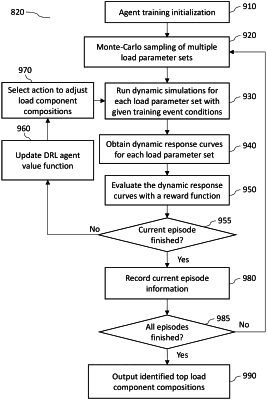| CPC G06F 30/27 (2020.01) [G06F 2119/06 (2020.01)] | 22 Claims |

|
1. A method for generating a load model having composite load components for an electric power system, the method comprising:
acquiring state information at a bus of the electric power system;
acquiring a training event record; and
generating the load model by sequentially executing steps of:
determining a final load component composition for a predetermined composite load model structure referencing to both the state information and the training event record; and
determining a plurality of final load parameters corresponding to the final load component composition and the predetermined load model structure also referencing to both the state information and the training event record
wherein the determining the final load component composition comprises:
initializing a plurality of load component compositions;
optimizing the plurality of the initial load component compositions with a machine learning agent to generate a predetermined number of top load component compositions;
calculating quantile loss for each of the top load component compositions with a predefined quantile level; and
selecting one of the top load component compositions that has the lowest quantile loss as the final load component composition.
|